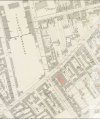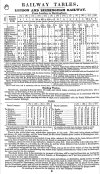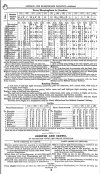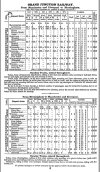Good afternoon Genmac. Thank you so much ---I believe we ( you) have cracked-it! The information you supplied seems to solve most of the problem. The link is almost certainly the age of the of the L&BR goods yard, working by c1846. This date ties in with Joseph my Gt Grandad's move down to Birmingham from Chester in 1847 or 1848. TRAINS and RAILWAYS were definitely the new up and coming industry to be in for a newly married couple in those early years and the new Birmingham link was just a stone's throw from where they lived in Vauxhall Rd--as you rightly say. It looks very likely therefore that Joseph Sealey WAS working in the newly built good yard for the next 2 or 3 years . Around 1851 or 1852 Joseph moved to Camden in London with his young wife and their two Birmingham-born children--and once again the map you sent and your ideas about The Grand Union Canal or the Camden goods yard also tie in. Camden is of course near the end of the Grand Union canal and the goods yards of the newly built railway linking B'ham and London. As you say, the new Camden goods yard was opened in 1864 --however, this date was a bit before Joseph left Birmingham ( circa 1852) ---BUT, a google search shows there were some earlier goods yards at Camden connected to the B'ham railway from 1839 and enlarged between 1846 and 1856---- tying- in exactly with Joseph and his families move there in c 1852---AND their new Camden address was Leybourne St, not far from this new goods yard ( and even the grand union canal as you say!!!!--). So----problem seems solved. Is there anything left of the original Curzon St goods yard? You mentioned the turntable sheds unearthed during the HS train digs-----if so I'll pay a visit when I get to B'ham later this year--also to see the back to backs. You mentioned your family connections during those early years of this Railway system in Aston area-----our mutual ancestors could have even have crossed paths , although mine were only in that area for a couple of years. Interesting subject eh? THANKS again Genmac-----really appreciated. Dave.
Pleased that some of my information helped you to start to piece together and put together possible social history mobility 'context' ready to conduct further research to try to provide further 'evidence' proof together with your BMD certificates and copies of UK Census records.
I am not sure about the current possibilities to visit or even 'access' the new HS2 Curzon Street station which is a 'secure building site'. Unfortunately I don't think that there is anything left of the original Curzon St Goods Yards, so you will have to rely on Old Photos / Maps on Birmingham History Forum . Likewise I don't think there is any access to the original oldest roundhouse now surrounded by building materials for the new HS2 station project.
One piece of good news in the near future is that currently the only oldest building of original station left standing is the facade of the Grade 1 station entrance /hotel which is currently been restored. Some time in the near future it will reopen as visitor centre for HS2 - watch this space.
Unfortunately with regards to your comment 'our mutual ancestors could have even crossed paths' I am afraid that chances are this did not happen:-
- 'Frosts' from Cuddington did not arrive in B'ham until 1867 and went to live on the west side of city in Blews St in the Birmingham Jewellery Quarter
- 'Rileys' from Derbys/Notts only lived in B'ham from 1870 - 1872 when he trained as clerk in Curzon St Goods Yard for the Midland Railway
Similar parts of the 'context stories' though revolve around social mobility of the nuclear family units in the 19th Century.
Also the rapid development of new railways ,their infrastructure, occupation opportunities and the movement of goods, parcels & raw materials mainly by Railway Carmen with their horse drawn carts. Perhaps part of your next steps might be to find out if there are any employment/ union records left of specific railway/canal companies in mid to late 1800's in B'ham and Campden






